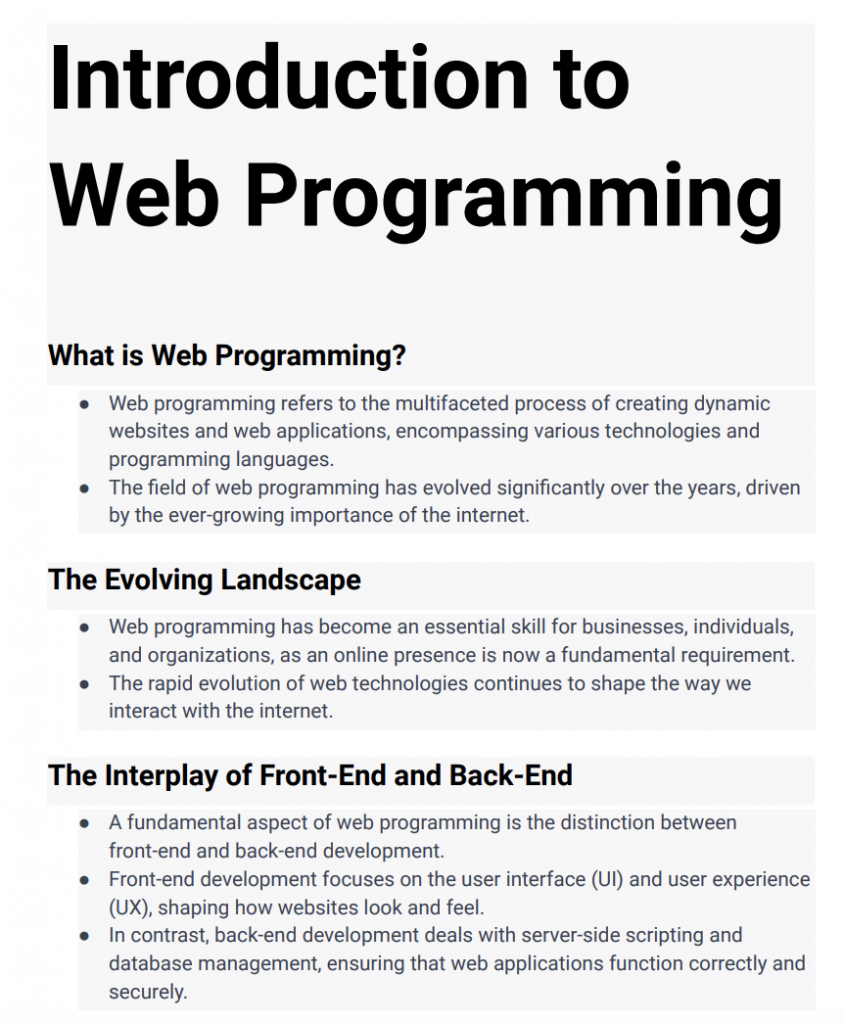Guide to Web Programming (Grade A+)
Summary:
The document provides a comprehensive overview of web programming, covering its various aspects and technologies. The first pages introduce web programming as a multifaceted field essential for creating dynamic websites and web applications. It has evolved significantly and is crucial for businesses and individuals alike. The document distinguishes between front-end and back-end development. Front-end focuses on user interface and experience, employing technologies like HTML, CSS, and JavaScript. The back end deals with server-side scripting and database management, ensuring the functionality and security of web applications. The document emphasizes that web programming is not just about coding but also involves understanding how to create an effective user experience and secure, scalable back-end systems.
Excerpt:
Guide to Web Programming
Introduction to Web Programming
What is Web Programming?
● Web programming refers to the multifaceted process of creating dynamic websites and web applications, encompassing various technologies and programming languages.
● The field of web programming has evolved significantly over the years, driven by the ever-growing importance of the internet.
The Evolving Landscape
● Web programming has become an essential skill for businesses, individuals, and organizations, as an online presence is now a fundamental requirement.
● The rapid evolution of web technologies continues to shape how we interact with the internet.
The Interplay of Front-End and Back-End
● A fundamental aspect of web programming is the distinction between front-end and back-end development.
● Front-end development focuses on the user interface (UI) and user experience (UX), shaping how websites look and feel.
● In contrast, back-end development deals with server-side scripting and database management, ensuring that web applications function correctly and securely.
Front-End Development
The Art of Front-End Development
● Front-end developers craft a website’s visual elements and interactivity, striving to create an engaging user experience.
● They work with technologies like HTML (Hypertext Markup Language), CSS (Cascading Style Sheets), and JavaScript to achieve this goal.
HTML: The Foundation
● HTML provides the structural framework for web pages, defining the elements and layout.
● HTML5, the latest version, introduces new features such as video and audio elements, as well as improved semantics for accessibility.


Reviews